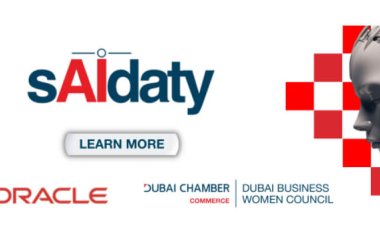
Oracle CEO Larry Ellison unveiled the Exalytics Intelligence Machine, the latest member of the company’s products that combine software and hardware, during a keynote address at the OpenWorld conference on yesterday in San Francisco.
Exalytics incorporates an in-memory database, a design principle that will put it in direct competition with SAP’s HANA in-memory computing platform, Ellison said. In-memory databases place information to be processed in RAM, instead of reading it off disks, providing a performance boost.
The Exalytics machine includes 40 processor cores and 1TB of DRAM, but can hold five to 10TB of data in memory thanks to compression, Ellison said.
It runs a software stack that includes parallelised versions of Oracle’s TimesTen in-memory database, BI (business intelligence) stack and Essbase OLAP (online analytical processing) server, Ellison revealed.
The system handles user queries “at the speed of thought” through a new interactive user interface, which will be demonstrated on Monday, Ellison said. The UI runs the same on PCs and the Apple iPad. “It really is quite spectacular.”
According to him, an adaptive in-memory cache decides which information should be stored in memory based on the ongoing workload. “If people keep asking the same questions over and over again, we keep the answers in memory so we don’t have to compute them again.” The cache is self-tuning, he added.
Ellison did not provide pricing information for the system, and it was not immediately clear when the product will be available, but more details could come this week at OpenWorld.
One major difference between Exalytics and HANA lies in the hardware strategy, as customers can choose from a number of different hardware vendors who are partnering with SAP to sell HANA as an appliance, it was pointed out.
“Oracle’s in-memory play validates SAP’s innovation in this space and efforts to redefine and simplify the technology stack,” SAP spokesman James Dever said. “It will be telling to see their true commitment to in-memory, which challenges Oracle’s bread-and-butter relational database business.”
Meanwhile, Ellison did not discuss another expected new system that will apparently be called the Big Data Appliance. That product, which was on display outside the OpenWorld keynote hall, will involve the Hadoop open-source framework for large-scale data processing as well as NoSQL database from Oracle, according to a description card.
While Oracle’s rivalry with Hewlett-Packard has heated up in recent months, Ellison reserved the trash talk on Sunday for IBM.
“We’re determined to deliver best-of-breed in every aspect of our computing architecture,” Ellison said. “We’re in the business of catching up [with IBM] in the microprocessor business. If we don’t pass them we’ll be very, very close. If our microprocessor is the same speed and we move data a hundred times faster than they do, I like our chances in the marketplace.”
Also before revealing Exalytics, Ellison gave an overview of Oracle’s line of systems that combine stacks of software with hardware components, including servers, networking and storage. The strategy began with the Exadata database machine and Exalogic application server.
From the beginning, Oracle’s design goals for its systems were the highest performance for the lowest cost, Ellison said. “For a given task, it will cost you less on an Exadata than it would on a plain old commodity server.”
The main idea was a “parallel everything” architecture, with various set of components working in unison for more power and reliability, he said.
“These machines should never, ever fail,” he said. “Hardware breaks. Software breaks too. But if you have a parallel architecture you should be tolerant of those failures.”
Meanwhile, faster chips aren’t the best way to make software run faster, because the real bottleneck is storage, according to Ellison. Database performance is “about moving data, and not doing arithmetic on a microprocessor,” he said.
Oracle’s systems also use advanced data compression, cutting the amount of storage costs and vastly reducing the amount of information that has to move back and forth between storage and the server, he said.
Overall, “we move data around a hundred times faster than anyone else in this business,” Ellison claimed.
Ellison cited a series of companies such as Proctor & Gamble, BNP Paribas and AFG, which experienced vast performance and cost savings through Exadata. “Some 1,000 Exadata machines have been installed and 3,000 more will be sold this year,” Ellison said.
Ellison also shared some Exalogic customer success stories. “We’re actually getting more rapid adoption from Exalogic than we did from Exadata at the same point in time,” he said. However, no specific sales figures were provided.
Java applications’ response times are 10 times as fast on Exalogic, and companies can serve many more users at once, Ellison said.
Some 45,000 people are attending the conference, according to Oracle. It is co-located with the JavaOne show Oracle inherited from the purchase of Sun Microsystems. OpenWorld continues this week through Thursday in San Francisco.





